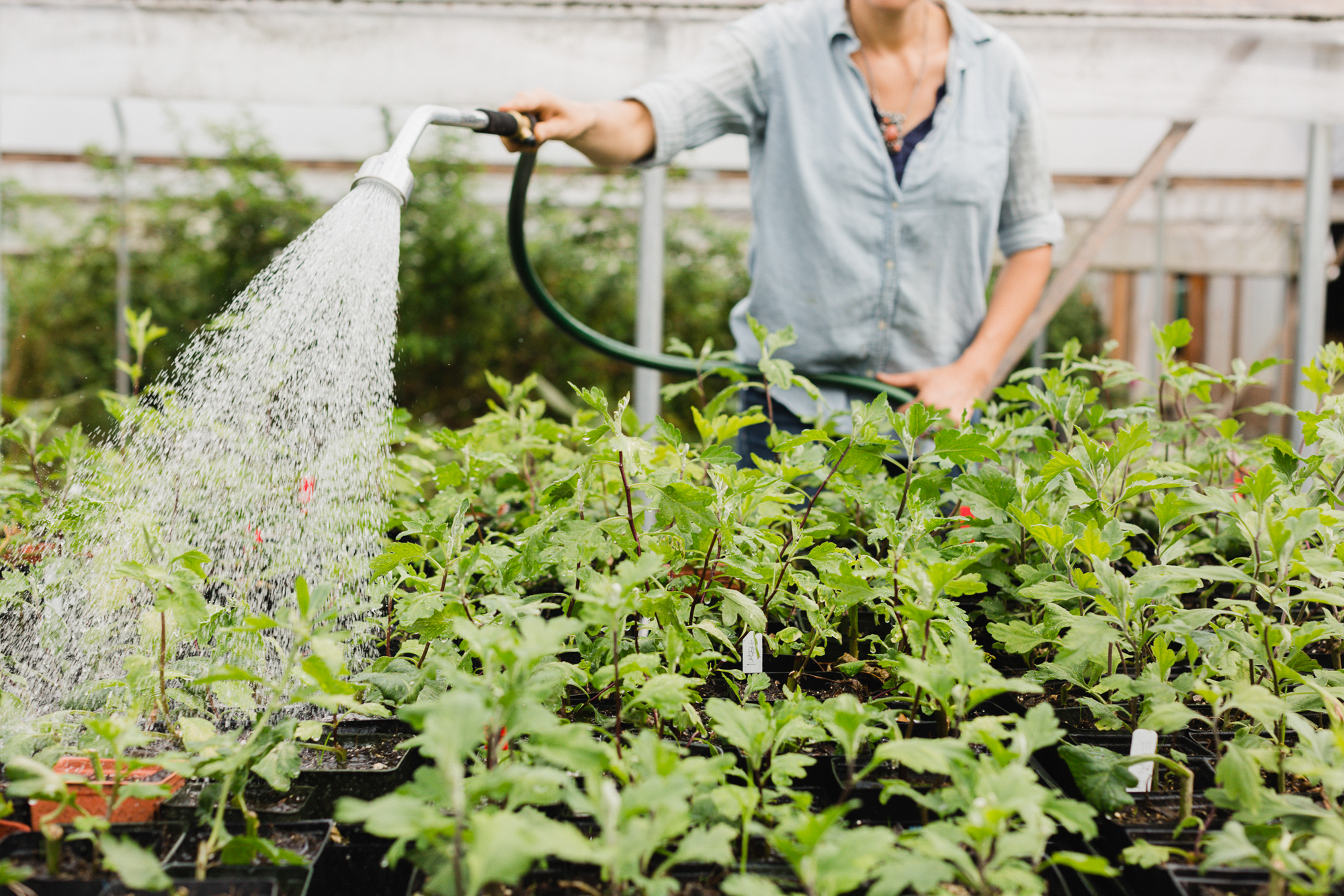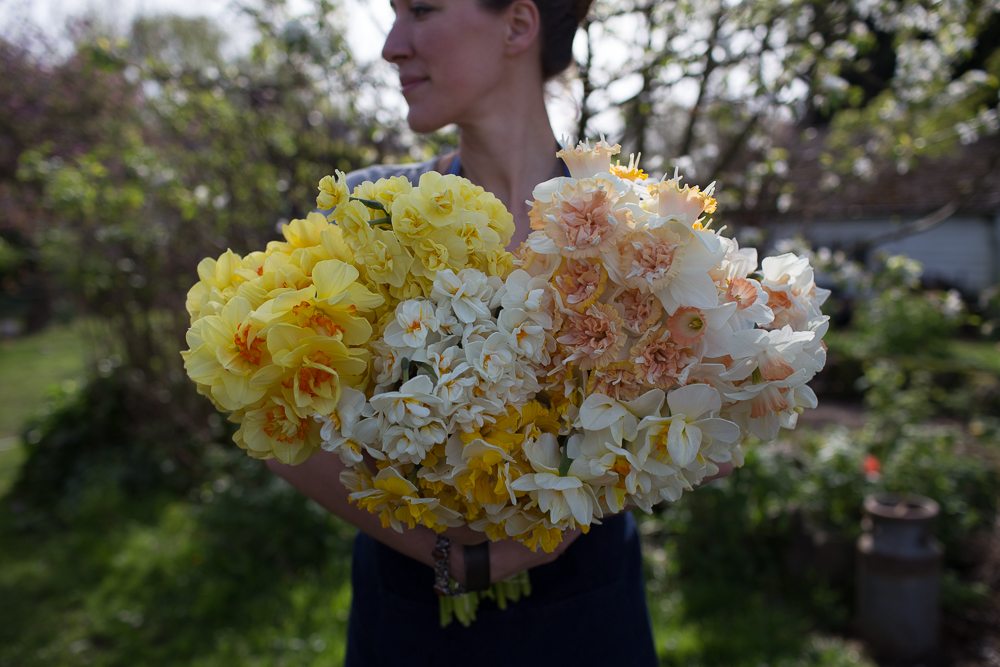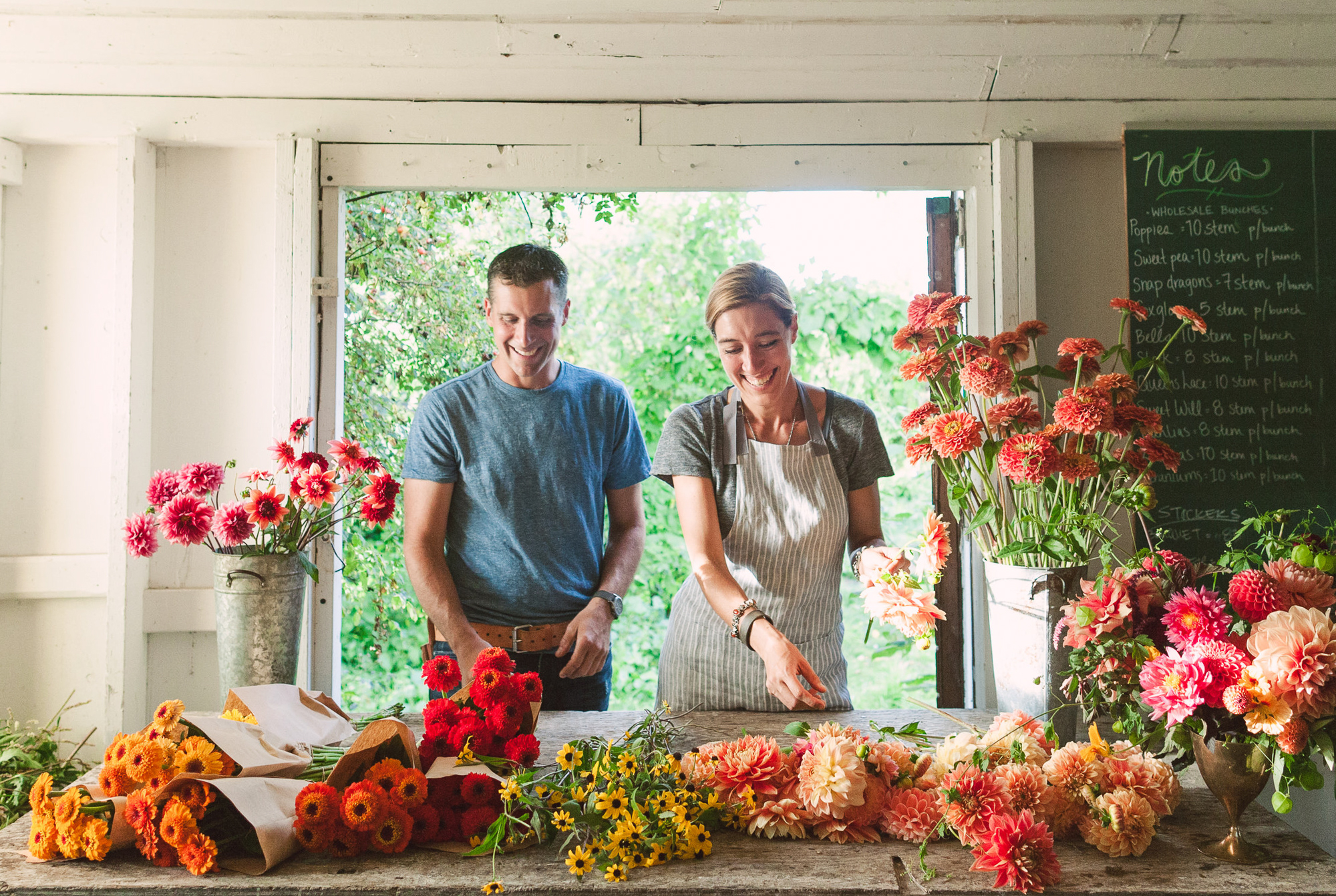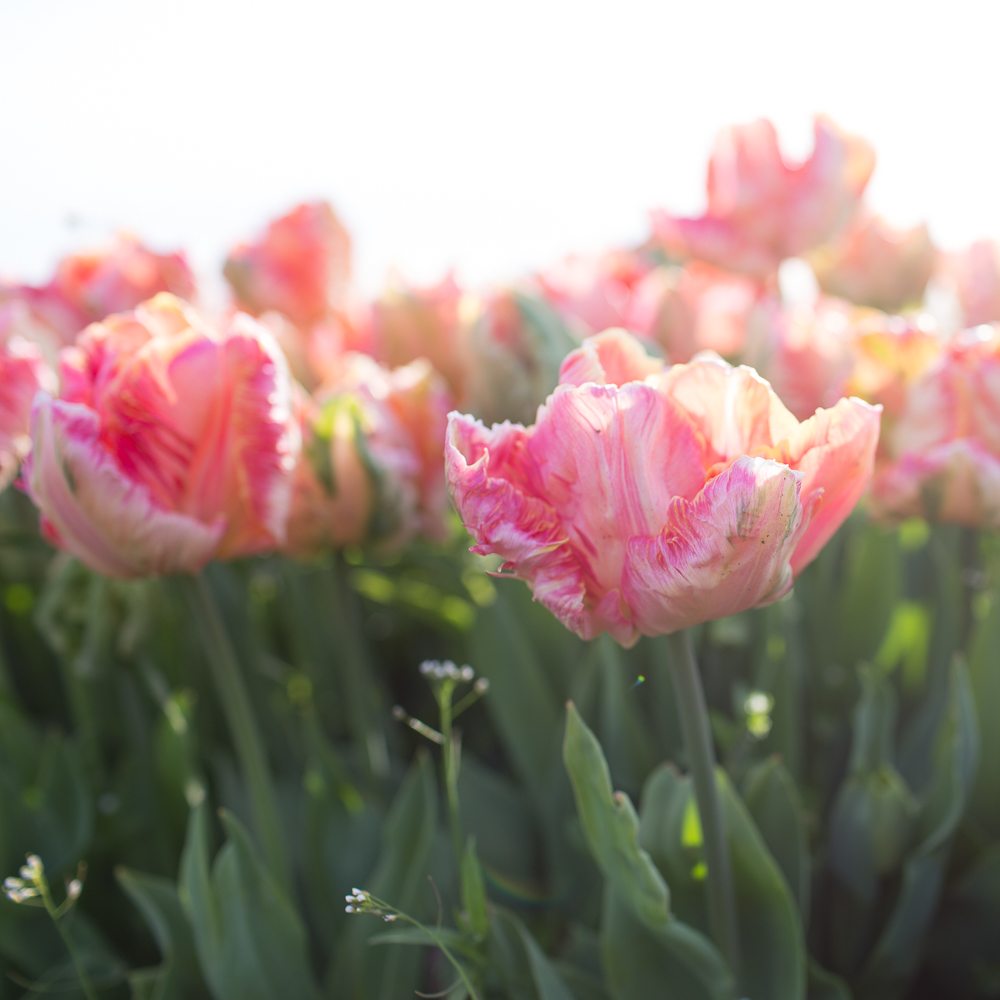
Here at Floret, we plant tens of thousands of tulips each autumn. There are a few different methods for growing these showy spring bloomers, depending on whether you simply want to add color to your spring landscape or harvest them in abundance as cut flowers. No matter how you plant them, be sure to pick a spot that gets full sun and doesn’t have any standing water, since really wet soil will encourage disease and rot.
Tulips require at least 6 weeks of cold weather to flower properly, so if you live where winters don’t get down to freezing temperatures, you’ll need to order prechilled bulbs.
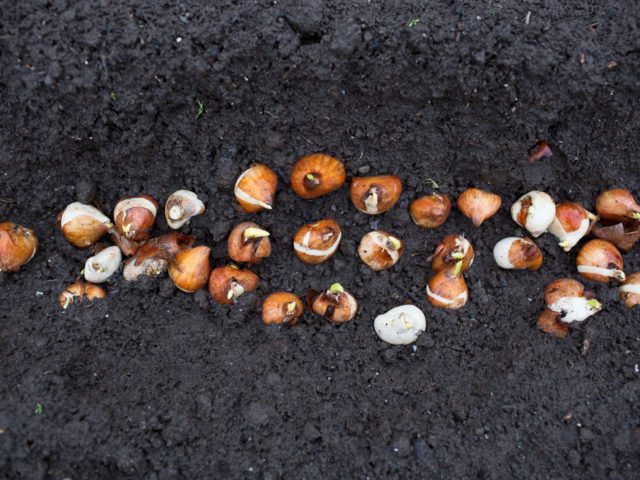
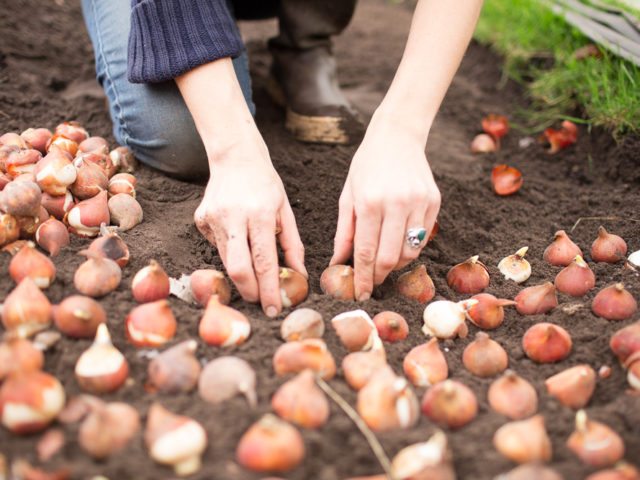
In the garden, tulips make the most impact when planted en masse. For a real show, I recommend ditching the bulb planter, instead planting clumps of at least 10 bulbs. Simply dig out a generous circle of soil, about 6 in (15 cm) deep, mix in a little organic bulb fertilizer and compost, and then plant your bulbs roughly three times as deep as they are tall.
Tulips can be planted quite close, less than 1 in (2.5 cm) from each other, similar to eggs in a carton. Once your bulbs are securely in place, water deeply and refill the hole with the soil you removed earlier. Add 1 to 2 in (2.5 to 5 cm) of compost on top to act as a mulch. Be sure to insert some type of stake so you remember where you planted them.
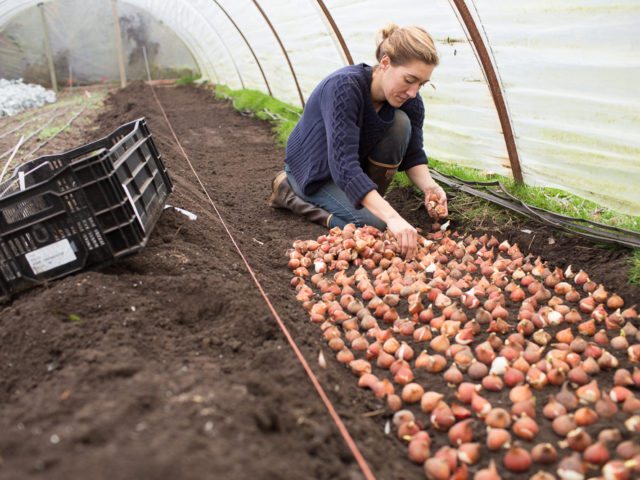
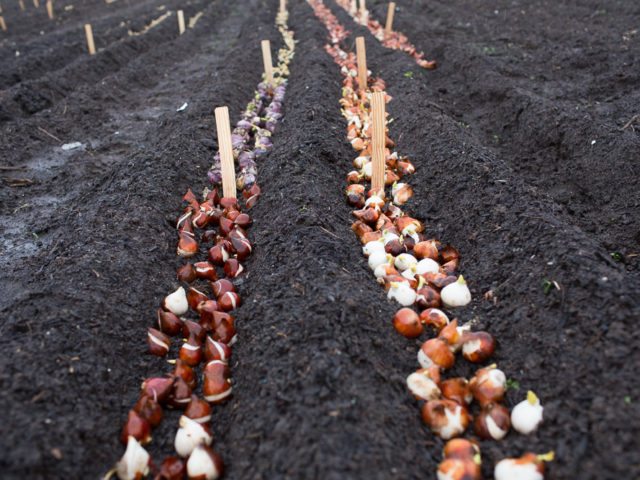
Bulbs can also be planted in pots. When choosing a container, remember that bigger is always better because larger pots don’t dry out as quickly and can hold more bulbs. Tulips can be planted quite densely in pots, similar to eggs in a carton.
To grow tulips solely for cutting, plant them in a wide trench. For the trench method, dig out a trench that is 3 ft (1 m) wide and 6 in (15 cm) deep, piling all the dirt to one side. Sprinkle a light dusting of organic bulb fertilizer into the trench and rake it in, smoothing the bottom of the trench at the same time. Place the bulbs, pointed side up, close but not touching. Label each individual variety as you go.
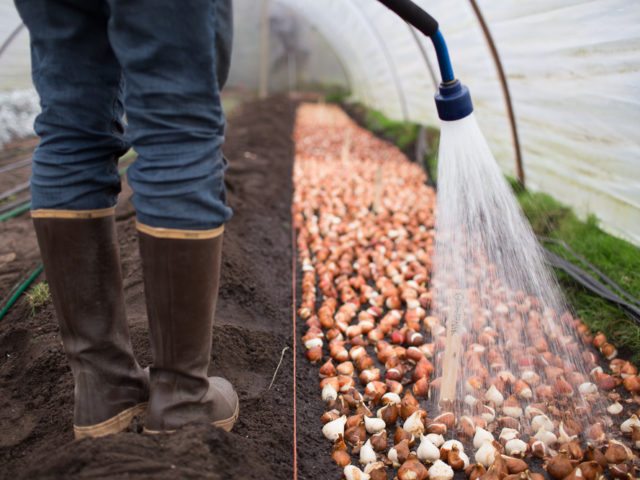
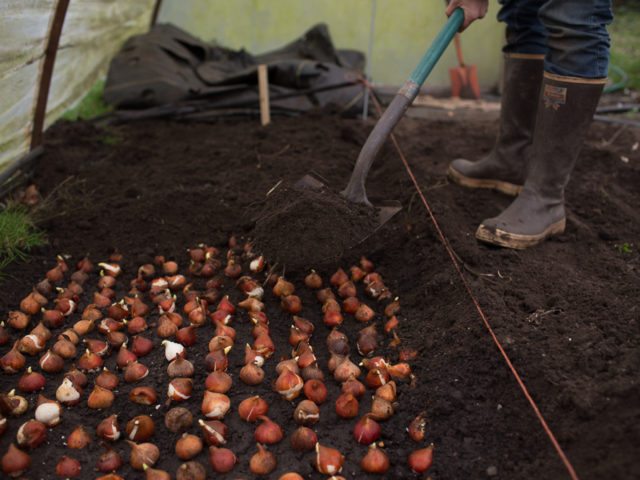
Once the bulbs are in, water them deeply, letting the trench fill at least half full with water, which encourages vigorous root growth, in turn producing even larger flowers. Backfill the trench, mulch the top with 1 to 2 in (2.5 to 5 cm) of compost, and lay down irrigation lines, watering deeply a few times throughout the winter. It’s really quite simple!
Tulips can also be grown in bulb crates and forced into flower during the winter months in a heated greenhouse. However, this technique requires prechilled bulbs and quite a bit of precision. To be honest, we’re still trying to master the art ourselves. Once I get it figured out, I’ll be sure to share our secrets.
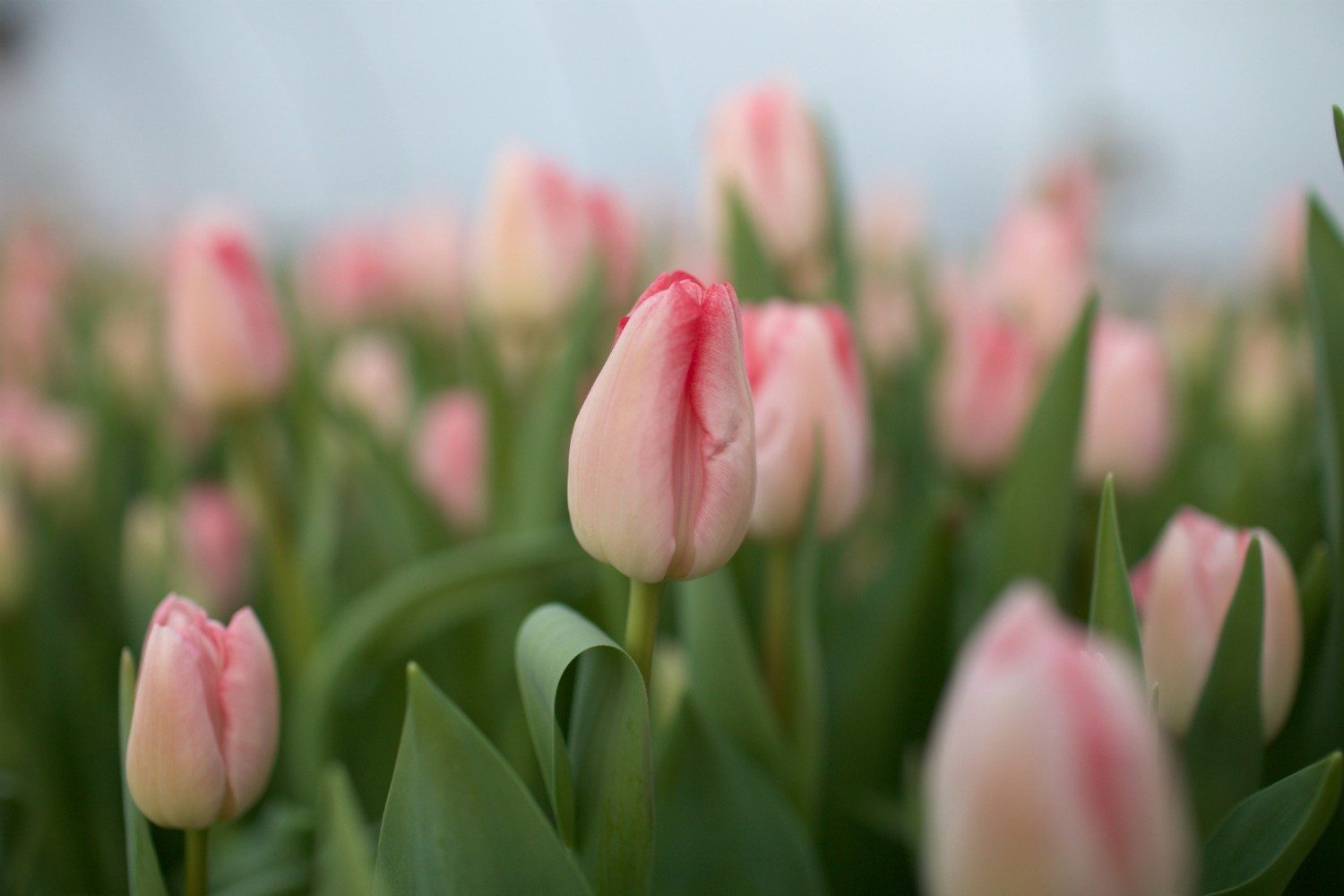
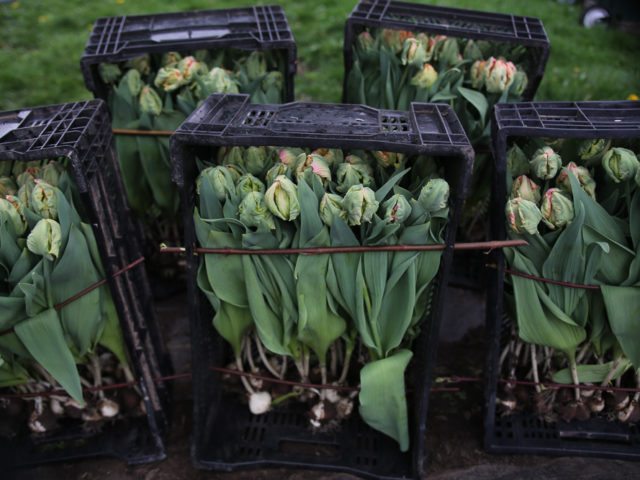
For the longest vase life, harvest when the flowers are still in bud, with just a hint of color showing on the outer petals.
At Floret, we treat our tulips as annuals and pull up the entire plant, bulb and all, during harvest. This gives us maximum stem length, extended storage, and a long vase life. With the bulbs attached, tulips can be stored dry for 2 weeks in the cooler, because they are still connected to their food source. When it’s time to use them, we simply cut off the bulbs and place stems in water with flower food.
If you want your tulips to return next spring, it’s important to leave at least 2 sets of leaves on the stem when harvesting to replenish the bulb and give it energy to bloom the following season. Flowers are typically smaller and of lesser quality in subsequent years but still put on a pretty show.
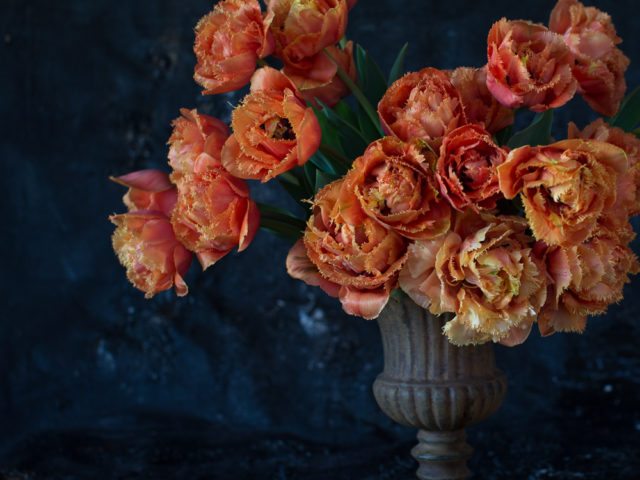
Tulips are naturally a very long-lasting cut flower. Store-bought stems generally persist for 4 to 5 days, but homegrown varieties can easily hold for a week and a half in the vase.
Because tulips have a tendency to bend and curve right after harvest, wrap the top two-thirds of the flowers in a funnel of paper and stand them upright in water for a few hours. Once fully hydrated, they will stand much straighter in the vase.
Keep in mind that once placed in water, fresh-picked stems will elongate during the first few days, so if you’re adding them to an arrangement, nestle the flowers down deeper than you ultimately want them to be. Flower preservative will prolong the vase life of tulips and keep the petals vibrant and richly colored.
